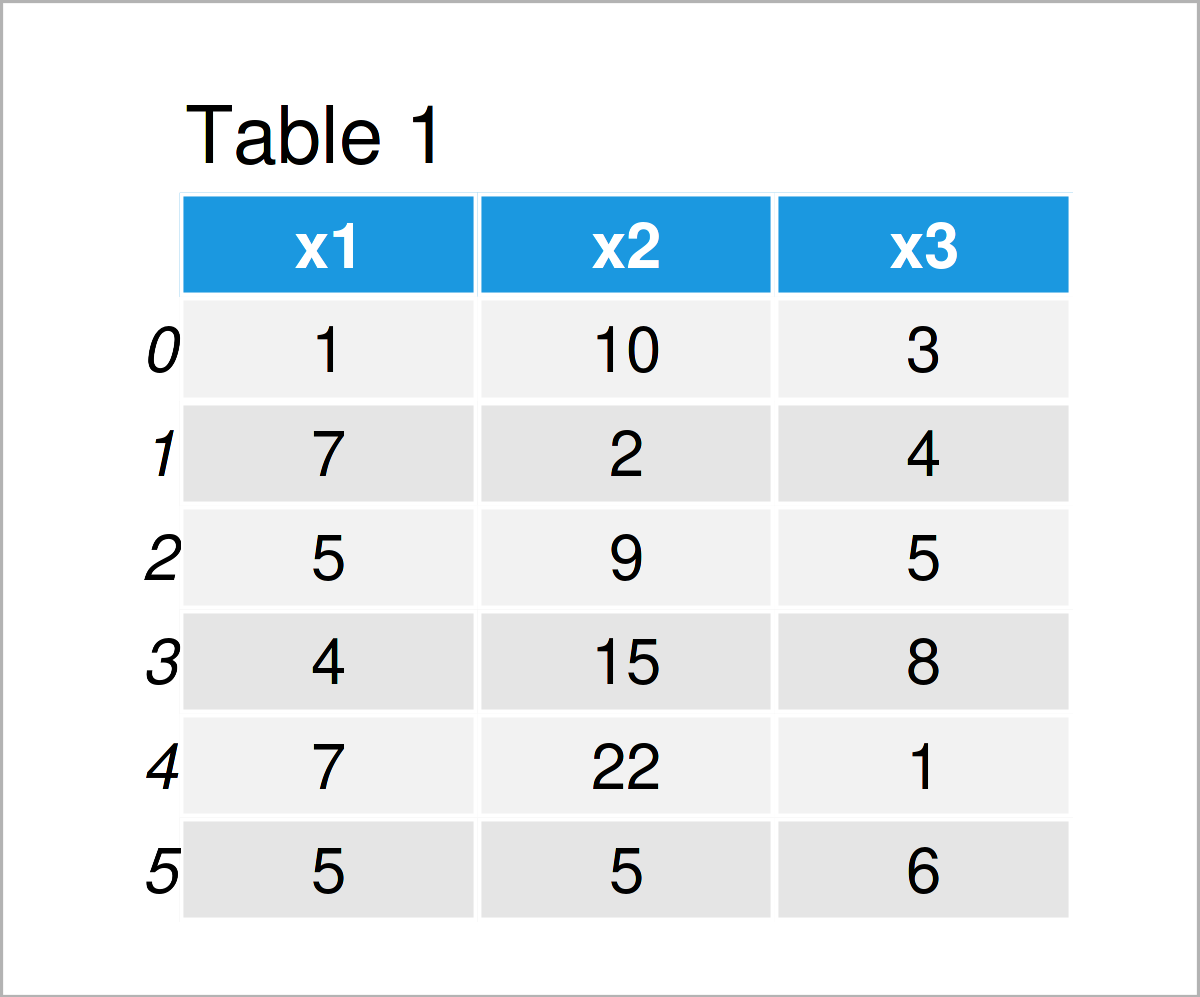Convert String to Integer in pandas DataFrame Column in Python (4 Examples)
In this Python tutorial you’ll learn how to transform a pandas DataFrame column from string to integer.
Table of contents:
So now the part you have been waiting for – the examples.
Example Data & Libraries
First, we need to load the pandas library:
import pandas as pd # Import pandas
The following data is used as a basis for this tutorial:
data = pd.DataFrame({'x1':['1', '7', '5', '4', '7', '5'], # Create pandas DataFrame 'x2':['10', '2', '9', '15', '22', '5'], 'x3':['3', '4', '5', '8', '1', '6']}) print(data) # Print pandas DataFrame

Table 1 shows the structure of our example pandas DataFrame – It has six rows and three columns.
Let’s check the classes of the variables in our pandas DataFrame:
print(data.dtypes) # Check data types of columns # x1 object # x2 object # x3 object # dtype: object
As you can see, each of the columns in our example data set has the object data type. Note that the pandas library uses the object dtype for storing strings, i.e. actually the columns in our example DataFrame are strings.
The following examples show different ways on how to convert pandas DataFrame columns to the integer class.
Let’s move on to the examples!
Example 1: Convert Single pandas DataFrame Column from String to Integer
Example 1 demonstrates how to convert one specific pandas DataFrame column from string to the integer data type.
For this task, we can apply the astype function as shown below:
data_new1 = data.copy() # Create copy of DataFrame data_new1['x1'] = data_new1['x1'].astype(int) # Transform string to integer
Let’s return the data types of our updated pandas DataFrame:
print(data_new1.dtypes) # Check data types of columns # x1 int32 # x2 object # x3 object # dtype: object
As you can see, we have converted the first column x1 to the integer class. The other columns still have the object (i.e. string) dtype.
Example 2: Convert Multiple pandas DataFrame Columns from String to Integer
Example 2 illustrates how to transform multiple variables from the string data type to integer.
For this, we can apply the following Python syntax:
data_new2 = data.copy() # Create copy of DataFrame data_new2 = data_new2.astype({'x2': int, 'x3': int}) # Transform multiple strings to integer
Let’s check the data types once again:
print(data_new2.dtypes) # Check data types of columns # x1 object # x2 int32 # x3 int32 # dtype: object
This time, we have switched the data classes of the columns x2 and x3 to the integer class.
Example 3: Convert All pandas DataFrame Columns from String to Integer
It is also possible to change the data type of all columns simultaneously from string to integer.
Consider the Python code below:
data_new3 = data.copy() # Create copy of DataFrame data_new3 = data_new3.astype(int) # Transform all columns to integer
Now, we can have another look at the data types of the columns of our pandas DataFrame:
print(data_new3.dtypes) # Check data types of columns # x1 int32 # x2 int32 # x3 int32 # dtype: object
As you can see, all columns have been converted to the integer data type.
Example 4: Convert pandas DataFrame Column from String to Integer Using to_numeric() Function
So far, we have only used the astype function to modify and adjust the classes of our pandas DataFrame columns.
This example, in contrast, demonstrates how to use the to_numeric function for this task:
data_new4 = data.copy() # Create copy of DataFrame data_new4['x1'] = pd.to_numeric(data_new4['x1']) # Apply to_numeric function
Once again, let’s print the data types of all columns:
print(data_new4.dtypes) # Check data types of columns # x1 int64 # x2 object # x3 object # dtype: object
Similar to Example 1, we have changed the data type of the variable x1 from string to integer. However, this time we have used the to_numeric function instead of the astype function.
Video & Further Resources
Have a look at the following video on my YouTube channel. I illustrate the Python codes of this article in the video.
Besides that, you might read the related tutorials on this website.
- Handling DataFrames Using the pandas Library in Python
- Change Data Type of pandas DataFrame Column
- Specify dtype when Reading pandas DataFrame from CSV File
- Drop pandas DataFrame Column by Index in Python
- Insert Column at Specific Position of pandas DataFrame in Python
- Replace NaN by Empty String in pandas DataFrame in Python
- Add Column to pandas DataFrame in Python
- Delete Column of pandas DataFrame in Python
- Get Max & Min Value of Column & Index in pandas DataFrame in Python
- Python Programming Tutorials
This tutorial has illustrated how to convert and parse a pandas DataFrame column from string to integer in Python. Don’t hesitate to let me know in the comments, in case you have any further questions or comments. Furthermore, please subscribe to my email newsletter for updates on new articles.






